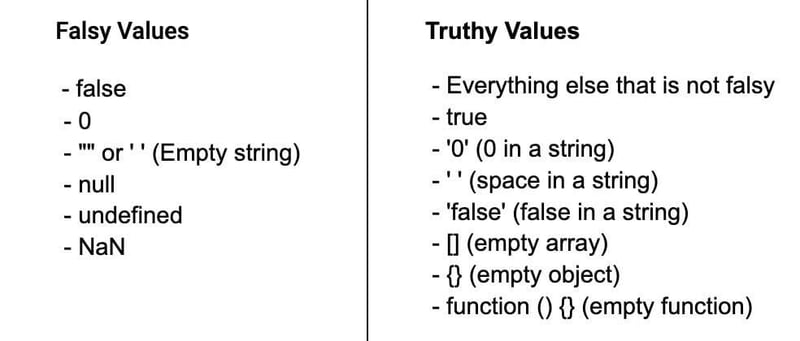Must-Know Algorithms for System Design Interviews: A Comprehensive Guide
In the competitive landscape of tech interviews, system design questions have become a critical component for evaluating senior engineers. Unlike coding interviews that test algorithmic problem-solving skills, system design interviews assess your ability to architect scalable, reliable, and efficient systems. This requires deep understanding of fundamental algorithms and patterns that form the backbone of modern distributed systems. This guide explores the essential algorithms and concepts you should master for system design interviews, complete with real-world applications and implementation insights. Data Processing Algorithms MapReduce What it is: MapReduce is a programming model designed for processing and generating large datasets in parallel across distributed clusters. Introduced by Google in 2004, it's now fundamental to big data processing. How it works: Map phase: The input data is divided into smaller chunks processed in parallel by map functions, which transform each piece into key-value pairs. Shuffle phase: The system groups all values associated with the same key. Reduce phase: Reduce functions process each group of values with the same key in parallel to produce the final output. Use cases: Search engine indexing Web access log analysis Machine learning model training on large datasets Analyzing social network data Real-world example: Google used MapReduce to rebuild their index of the web, processing over 20 petabytes of data daily. Hadoop's implementation democratized this capability for companies without Google's resources. Interview tip: Understand when MapReduce is appropriate (batch processing of large datasets) and when it isn't (real-time data processing, iterative algorithms). Stream Processing What it is: Unlike batch processing (MapReduce), stream processing handles data continuously as it arrives, analyzing and acting on data in real-time. Key algorithms: Windowing techniques: Processing data in time-based (e.g., 5-minute windows) or count-based (e.g., every 1000 events) chunks Watermarking: Handling late-arriving data Exactly-once processing: Ensuring events are processed precisely once despite failures Popular frameworks: Apache Kafka Streams Apache Flink Apache Storm Apache Samza Use cases: Real-time fraud detection Live dashboards and analytics IoT sensor data processing Algorithmic trading Interview example: Design a real-time analytics dashboard showing user engagement metrics with sub-second latency. Consistent Hashing What it is: A special hashing technique that minimizes reorganization when nodes are added or removed from a distributed hash table. How it works: Map both servers and data keys to positions on a conceptual ring (0 to 2^n-1) Each key is assigned to the first server found when moving clockwise from the key's position When servers are added/removed, only a small fraction of keys need rebalancing Benefits: Minimizes data movement when scaling clusters up/down Enables horizontal scaling with minimal disruption Supports non-uniform server capacities through virtual nodes Real-world applications: Amazon's Dynamo DB Content Delivery Networks (CDNs) Distributed caches like Redis Cluster and Memcached Implementation note: In practice, implementations often use multiple hash functions or virtual nodes to achieve better distribution. Search and Ranking Algorithms Inverted Index What it is: The core data structure behind search engines, mapping content (words, terms) to their locations in documents. Structure: Dictionary of terms For each term, a list (posting list) of documents containing that term Additional metadata like position, frequency, and relevance scores Building process: Text processing (tokenization, normalization) Term extraction and document mapping Optimization (compression, scoring) Performance enhancements: Skip lists for faster list intersection Bloom filters to quickly determine presence/absence Pre-computed scores for common queries Use cases: Web search engines Enterprise search E-commerce product search Full-text search in databases Interview question: How would you design a search engine for Twitter that can handle millions of new tweets per day while providing real-time search results? PageRank What it is: An algorithm developed by Google's founders that ranks web pages based on the link structure of the web. Algorithm overview: Model the web as a directed graph where nodes are pages and edges are links Calculate the importance of a page based on the number and quality of links pointing to it Use an iterative approach to converge on stable values Mathematical foundation: Based on a Markov chain model of random surfer behavior Calculated as an eigenvector of the web's adjacency matrix Includes damping factor (typically 0.85) to handle dead ends Modern applications: Web page ranking Social network

In the competitive landscape of tech interviews, system design questions have become a critical component for evaluating senior engineers. Unlike coding interviews that test algorithmic problem-solving skills, system design interviews assess your ability to architect scalable, reliable, and efficient systems. This requires deep understanding of fundamental algorithms and patterns that form the backbone of modern distributed systems.
This guide explores the essential algorithms and concepts you should master for system design interviews, complete with real-world applications and implementation insights.
Data Processing Algorithms
MapReduce
What it is: MapReduce is a programming model designed for processing and generating large datasets in parallel across distributed clusters. Introduced by Google in 2004, it's now fundamental to big data processing.
How it works:
- Map phase: The input data is divided into smaller chunks processed in parallel by map functions, which transform each piece into key-value pairs.
- Shuffle phase: The system groups all values associated with the same key.
- Reduce phase: Reduce functions process each group of values with the same key in parallel to produce the final output.
Use cases:
- Search engine indexing
- Web access log analysis
- Machine learning model training on large datasets
- Analyzing social network data
Real-world example: Google used MapReduce to rebuild their index of the web, processing over 20 petabytes of data daily. Hadoop's implementation democratized this capability for companies without Google's resources.
Interview tip: Understand when MapReduce is appropriate (batch processing of large datasets) and when it isn't (real-time data processing, iterative algorithms).
Stream Processing
What it is: Unlike batch processing (MapReduce), stream processing handles data continuously as it arrives, analyzing and acting on data in real-time.
Key algorithms:
- Windowing techniques: Processing data in time-based (e.g., 5-minute windows) or count-based (e.g., every 1000 events) chunks
- Watermarking: Handling late-arriving data
- Exactly-once processing: Ensuring events are processed precisely once despite failures
Popular frameworks:
- Apache Kafka Streams
- Apache Flink
- Apache Storm
- Apache Samza
Use cases:
- Real-time fraud detection
- Live dashboards and analytics
- IoT sensor data processing
- Algorithmic trading
Interview example: Design a real-time analytics dashboard showing user engagement metrics with sub-second latency.
Consistent Hashing
What it is: A special hashing technique that minimizes reorganization when nodes are added or removed from a distributed hash table.
How it works:
- Map both servers and data keys to positions on a conceptual ring (0 to 2^n-1)
- Each key is assigned to the first server found when moving clockwise from the key's position
- When servers are added/removed, only a small fraction of keys need rebalancing
Benefits:
- Minimizes data movement when scaling clusters up/down
- Enables horizontal scaling with minimal disruption
- Supports non-uniform server capacities through virtual nodes
Real-world applications:
- Amazon's Dynamo DB
- Content Delivery Networks (CDNs)
- Distributed caches like Redis Cluster and Memcached
Implementation note: In practice, implementations often use multiple hash functions or virtual nodes to achieve better distribution.
Search and Ranking Algorithms
Inverted Index
What it is: The core data structure behind search engines, mapping content (words, terms) to their locations in documents.
Structure:
- Dictionary of terms
- For each term, a list (posting list) of documents containing that term
- Additional metadata like position, frequency, and relevance scores
Building process:
- Text processing (tokenization, normalization)
- Term extraction and document mapping
- Optimization (compression, scoring)
Performance enhancements:
- Skip lists for faster list intersection
- Bloom filters to quickly determine presence/absence
- Pre-computed scores for common queries
Use cases:
- Web search engines
- Enterprise search
- E-commerce product search
- Full-text search in databases
Interview question: How would you design a search engine for Twitter that can handle millions of new tweets per day while providing real-time search results?
PageRank
What it is: An algorithm developed by Google's founders that ranks web pages based on the link structure of the web.
Algorithm overview:
- Model the web as a directed graph where nodes are pages and edges are links
- Calculate the importance of a page based on the number and quality of links pointing to it
- Use an iterative approach to converge on stable values
Mathematical foundation:
- Based on a Markov chain model of random surfer behavior
- Calculated as an eigenvector of the web's adjacency matrix
- Includes damping factor (typically 0.85) to handle dead ends
Modern applications:
- Web page ranking
- Social network influence measurement
- Citation analysis in academic papers
- Recommendation systems
Interview insight: While pure PageRank is rarely used alone today, understanding the fundamental concept of link analysis for ranking is crucial.
TF-IDF (Term Frequency-Inverse Document Frequency)
What it is: A numerical statistic reflecting the importance of a word to a document in a collection.
Formula:
- Term Frequency (TF): Frequency of term in document / Total terms in document
- Inverse Document Frequency (IDF): log(Total documents / Documents containing term)
- TF-IDF = TF × IDF
Implementation details:
- Various weighting schemes exist (boolean, logarithmic, augmented)
- Often combined with vector space model for document similarity
- Can be extended with BM25 for better results
Applications:
- Document classification
- Information retrieval
- Keyword extraction
- Content recommendation
Interview approach: Know how to implement TF-IDF from scratch and discuss its limitations (doesn't capture semantics or word relationships).
Database Algorithms
B-Trees and LSM Trees
B-Trees:
- Self-balancing tree data structure keeping data sorted for searches, insertions, and deletions
- Generalizes binary search trees, allowing nodes to have more than two children
- Optimized for systems that read and write large blocks of data (like disk storage)
- Used in most relational databases (MySQL, PostgreSQL) and file systems
Key characteristics:
- All leaf nodes at same depth (balanced)
- Non-leaf nodes store keys and pointers to children
- Time complexity: O(log n) for search, insert, delete
- Optimized for read-heavy workloads
LSM (Log-Structured Merge) Trees:
- Optimized for high write throughput
- Data is first written to in-memory buffer (memtable)
- Periodically flushed to disk as immutable SSTable files
- Background processes merge SSTables for read efficiency
Comparison:
- B-Trees excel at random reads but can struggle with write amplification
- LSM Trees excel at write throughput but may have read amplification
- LSM Trees are used in NoSQL databases (Cassandra, RocksDB, LevelDB)
Interview question: When would you choose a database using B-Trees vs. LSM Trees for your application?
ACID Transactions
What it is: A set of properties guaranteeing database transactions are processed reliably.
Components:
- Atomicity: Transactions are all-or-nothing
- Consistency: Transactions bring database from one valid state to another
- Isolation: Concurrent transactions don't interfere with each other
- Durability: Completed transactions survive system failure
Implementation mechanisms:
- Write-ahead logging (WAL): Records all changes before applying them
- Two-phase commit: Coordinates transactions across distributed systems
- Isolation levels: Read uncommitted, read committed, repeatable read, serializable
- MVCC (Multi-Version Concurrency Control): Maintains multiple versions of data for isolation
Trade-offs:
- Stronger guarantees typically reduce concurrency/performance
- Distributed ACID transactions add significant complexity
Real-world applications:
- Financial systems
- E-commerce order processing
- Enterprise resource planning systems
System design tip: Clearly articulate which ACID properties your design requires and how they'll be implemented.
Consensus Algorithms
What they are: Algorithms enabling distributed systems to agree on values despite failures.
Key algorithms:
Paxos:
- The first provably correct consensus algorithm
- Roles include proposers, acceptors, and learners
- Complex implementation due to many edge cases
Raft:
- Designed for understandability and implementability
- Leader-based approach with terms and logs
- Leader election, log replication, and safety guarantees
Practical Byzantine Fault Tolerance (PBFT):
- Handles malicious (Byzantine) failures
- Used in blockchain and mission-critical systems
- Higher message complexity than Paxos/Raft
Applications:
- Distributed databases (CockroachDB, TiDB)
- Distributed configuration (etcd, ZooKeeper)
- Blockchain networks
- Distributed lock managers
Interview insight: Know how these algorithms handle network partitions, system failures, and consistency guarantees.
Caching Strategies
LRU (Least Recently Used)
What it is: An eviction policy removing the least recently accessed items when cache is full.
Implementation:
- Combination of hash table and doubly linked list
- Hash table enables O(1) lookups
- Linked list tracks access order
- On access, move item to front of list
- On eviction, remove from back of list
Time complexity: O(1) for get and put operations
Code example (Python):
from collections import OrderedDict
class LRUCache:
def __init__(self, capacity):
self.cache = OrderedDict()
self.capacity = capacity
def get(self, key):
if key not in self.cache:
return -1
self.cache.move_to_end(key, last=False) # Move to front
return self.cache[key]
def put(self, key, value):
if key in self.cache:
self.cache.move_to_end(key, last=False)
self.cache[key] = value
if len(self.cache) > self.capacity:
self.cache.popitem(last=True) # Remove from back
Use cases:
- Web page caching
- Database query result caching
- Content delivery networks
- Mobile app data caching
LFU (Least Frequently Used)
What it is: An eviction policy removing the least frequently accessed items when cache is full.
Implementation:
- Requires tracking access frequency counters
- Often uses min-heap or buckets for efficient minimum finding
- More complex than LRU but can have better hit rates for certain workloads
Trade-offs vs. LRU:
- Better hit rate for workloads with clear frequency patterns
- Doesn't adapt as quickly to changing access patterns
- Higher implementation complexity
- Higher memory overhead for counters
Hybrid approaches:
- LFU with dynamic aging
- Segmented LRU/LFU combinations
- Window-based LFU
Interview tip: Discuss how you'd measure cache performance (hit rate, latency) and adapt cache strategies based on workload characteristics.
Caching Patterns
Read-Through:
- Cache sits between application and database
- On cache miss, cache itself loads data from database
- Application only interacts with cache, never directly with database
Write-Through:
- Data is written to both cache and database simultaneously
- Ensures consistency between cache and database
- Slower writes but faster reads
Write-Back (Write-Behind):
- Data is written to cache only
- Asynchronously written to database later
- Improves write performance but risks data loss
Write-Around:
- Writes go directly to database, bypassing cache
- Only read data is cached
- Good for write-heavy workloads where writes are rarely read
Implementation considerations:
- Cache invalidation strategies
- TTL (Time-To-Live) settings
- Handling thundering herd problem
- Distributed cache consistency
Interview scenario: Design Netflix's video content delivery system, discussing appropriate caching patterns for different types of data (metadata vs. video chunks).
Load Balancing Algorithms
Round Robin
What it is: Sequentially routes requests to servers in a circular order.
Implementation:
- Simple counter-based approach
- Can be weighted to account for server capacity differences
Characteristics:
- Easy to implement and understand
- Equal distribution of requests
- Doesn't account for server load or request complexity
- Works well when servers have similar capabilities
Variants:
- Weighted Round Robin
- Smooth Round Robin (avoids request clumping)
Real-world example: Nginx and HAProxy support Round Robin as a basic load balancing strategy.
Least Connections
What it is: Routes new requests to the server with fewest active connections.
Implementation:
- Requires tracking active connections per server
- Can be weighted based on server capacity
Benefits:
- Adapts to varying request processing times
- Prevents server overload
- Works well for long-lived connections
Limitations:
- Doesn't account for connection complexity
- Requires more state tracking than Round Robin
Use case: WebSocket servers where connections have varying lifespans.
IP Hash
What it is: Uses a hash of the client's IP address to determine which server receives the request.
How it works:
- Hash client IP address
- Use modulo operation to map hash to available servers
- Same client consistently routed to same server
Advantages:
- Session persistence without cookies or shared storage
- Good for stateful applications without shared session stores
- Simple to implement
Disadvantages:
- Uneven distribution if client IPs aren't well distributed
- Problems when servers are added/removed
Interview question: How would you design a load balancing system that maintains session affinity while still evenly distributing load?
Network Algorithms
Bloom Filters
What it is: A space-efficient probabilistic data structure for set membership testing.
Characteristics:
- Can tell if element is definitely not in set or probably in set
- False positives possible, false negatives impossible
- Constant time complexity for lookups
- Extremely space-efficient
Implementation:
- Uses k different hash functions
- Maps each element to k positions in a bit array
- Sets those positions to 1
- To check membership, verify all k positions are 1
Space/accuracy trade-off:
- Smaller filter = higher false positive rate
- Formula for optimal filter size and hash function count
Applications:
- Cache filtering (avoiding cache misses)
- Database query optimization
- Network routing tables
- Spell checkers
- Web crawler URL deduplication
Interview example: Designing a system to prevent redundant crawling of URLs in a distributed web crawler.
Merkle Trees
What it is: A tree where each non-leaf node is labeled with the hash of its children's labels.
Structure:
- Leaf nodes contain hashes of data blocks
- Parent nodes contain hashes of their children
- Root node represents hash of entire data structure
Properties:
- Efficient verification of large data structures
- O(log n) proof size for data verification
- Facilitates efficient synchronization of distributed data
Use cases:
- Blockchain systems (Bitcoin, Ethereum)
- Distributed databases (Cassandra, DynamoDB)
- Git version control
- Certificate transparency logs
Implementation insight: Often implemented as binary trees, but can be k-ary trees for efficiency.
Gossip Protocol
What it is: A peer-to-peer communication protocol for information dissemination in distributed systems.
Algorithm:
- Each node periodically selects random peers
- Exchanges state information with selected peers
- Both nodes update based on received information
- Process repeats, allowing information to spread epidemically
Types:
- Anti-entropy: Nodes reconcile differences in state
- Rumor mongering: Nodes spread new information until it becomes old
Characteristics:
- Robust against network failures
- Scales well with system size
- Eventually consistent
- Configurable fan-out and frequencies
Applications:
- Failure detection in distributed systems
- Database replication (Cassandra, Riak)
- Distributed consensus
- Service discovery
Interview discussion point: Trade-offs between gossip protocols and centralized coordination mechanisms.
Availability and Fault Tolerance
Circuit Breaker Pattern
What it is: A design pattern preventing cascading failures in distributed systems.
States:
- Closed: Normal operation, requests flow through
- Open: System is failing, requests fail fast without attempting operation
- Half-Open: After timeout, allows limited requests to test if system recovered
Implementation considerations:
- Failure thresholds (count or percentage)
- Timeout duration
- Reset strategy
- Fallback mechanisms
Benefits:
- Prevents cascading failures
- Allows failing services time to recover
- Provides fast failure notification
- Enables graceful degradation
Libraries/Frameworks:
- Netflix Hystrix
- Resilience4j
- Polly (.NET)
Interview design example: Designing a microservices architecture with circuit breakers to maintain system availability during partial outages.
Rate Limiting Algorithms
What it is: Mechanisms to control the rate at which users or services can access APIs or resources.
Key algorithms:
Token Bucket:
- Tokens added to bucket at constant rate
- Requests consume tokens from bucket
- If bucket empty, requests are rejected
- Allows for bursts up to bucket size
Leaky Bucket:
- Fixed-rate output regardless of input rate
- Queue buffers incoming requests
- Enforces consistent processing rate
- Less tolerant of bursts than token bucket
Fixed Window Counter:
- Count requests in fixed time windows
- Simple but susceptible to edge effects
Sliding Window Log:
- Track timestamp of each request
- Count requests within time window from current time
- Accurate but memory-intensive
Sliding Window Counter:
- Combination of fixed window and sliding approach
- Better accuracy/performance trade-off
Distributed implementation challenges:
- Race conditions
- Clock synchronization
- Shared state
Use cases:
- API rate limiting
- DDoS protection
- Traffic shaping
- Resource allocation
Interview tip: Discuss both client-side and server-side implementation options.
Exponential Backoff
What it is: A retry strategy where wait time between retries increases exponentially.
Algorithm:
- Start with base wait time (e.g., 100ms)
- After each failed attempt, multiply wait time by a factor (typically 2)
- Add randomness (jitter) to prevent synchronized retries
- Set maximum retry limit and maximum wait time
Formula: Wait time = min(cap, base * 2^attempt) * (1 + jitter)
Benefits:
- Prevents overwhelming recovering systems
- Reduces network congestion
- Works well with distributed systems
- Self-regulating retry frequency
Applications:
- Network request retries
- Distributed lock acquisition
- Job scheduling systems
- External API interaction
Interview implementation:
def exponential_backoff_retry(operation, max_attempts=5, base_wait_ms=100, max_wait_ms=30000):
attempt = 0
while attempt < max_attempts:
try:
return operation() # Attempt the operation
except RetryableError as e:
attempt += 1
if attempt >= max_attempts:
raise # Max attempts reached
# Calculate wait time with jitter
wait_ms = min(max_wait_ms, base_wait_ms * (2 ** (attempt - 1)))
jitter = random.uniform(0, 0.1) # 0-10% jitter
wait_time = wait_ms * (1 + jitter) / 1000 # Convert to seconds
time.sleep(wait_time)
Conclusion
Mastering these algorithms and concepts is essential for excelling in system design interviews. The most effective approach is to understand not just how these algorithms work but when and why to apply them in different scenarios.
Remember that system design is both an art and a science – there's rarely a single "correct" answer. The best designs balance technical constraints, business requirements, and operational considerations, leveraging these foundational algorithms as building blocks for robust, scalable systems.
As you prepare for your interview, practice applying these concepts to real-world problems, explain your reasoning clearly, and be ready to discuss trade-offs. Armed with this knowledge, you'll be well-equipped to tackle even the most challenging system design interviews.










![From drop-out to software architect with Jason Lengstorf [Podcast #167]](https://cdn.hashnode.com/res/hashnode/image/upload/v1743796461357/f3d19cd7-e6f5-4d7c-8bfc-eb974bc8da68.png?#)





























































